|
PHOTOCHEMISTRY,
PHOTOPHYSICS AND MOLECULAR SPECTROSCOPY OF
MOLECULES IN NOBLE GAS MATRICES
The
general problem under study is structural and
vibrational characterization of low
temperature matrix-isolated molecules by
vibrational spectroscopy. Thermal
conformational interconversion processes in
both the gaseous phase and occurring during
matrix deposition or within the deposited
matrices are also addressed in this research
program. In addition, photochemical processes,
in particular vibrational energy
redistribution/relaxation in simple molecules
isolated in matrices at low temperature were
also studied. The potential energy surfaces of
a considerable number of different molecules
with biological or industrial interest have
been studied regarding their spectroscopically
observable minima. The experimentally
accessible conformers predicted on the basis
of sophisticated theoretical ab initio
and/or DFT methods were afterwards searched by
matrix-isolation and low temperature solid
state FTIR spectroscopy, their structure
characterized and their reactivity (either
thermal or photochemical) studied. Exceptional
phenomena such as conformational cooling
during matrix deposition [“Missing
Conformers: Comparative Study of
Conformational Cooling in Cyanoacetic Acid and
Methyl Cyanoacetate Isolated in Low
Temperature Inert Gas Matrixes.”,
I.D.Reva, S.G.Stepanian, L.Adamowicz and
R.Fausto, Chem.Phys. Lett., 364 (2003) 361],
inversion of the lowest energy conformational
states upon phase change (including trapping
of the molecule under study in a noble gas
matrix) [“Low Temperature FT-IR and
Molecular Orbital Study of N,N-Dimethyl
Glycine Methyl Ester: Proof for Different
Ground Conformational States in Gas Phase and
in Condensed Media”, A.Gómez-Zavaglia
and R. Fausto, PCCP, 5 (2003) 52.],
conformationally selective aggregation [“Matrix-Isolation
FT-IR Spectra and Molecular Orbital
Calculations on Neutral N,N-Dimethylglycine”,
A.Gómez-Zavaglia, I.D.Reva and R. Fausto,
PCCP, 5 (2003) 41.], observation of conformer
dependent photodegradation pathways upon UV
excitation of matrix isolated molecules [“Infrared-Induced
Conformational Interconversion in Carboxylic
Acids Isolated in Low-Temperature Rare-Gas
Matrices”, E.M.S. Maçôas, L.
Kriachtchev, M. Pettersson, J. Lundell, R.
Fausto and M. Räsänen, Vibrat.Spectrosc., 34 (2004) 73.], in situ
photoproduction of Dewar-like bicyclolactones,
ketenes and isocyanides in low temperature
matrices [“Matrix-Isolation FTIR
and Theoretical Study of the UV-Induced
Photochemistry of a-Pyrone”, S. Breda,
I. Reva, L. Lapinski and R. Fausto, PCCP, 6
(2004) (in press)], first
observation of neutral forms of aminoacids in
the pure solid state [“Low Temperature
Solid-State FTIR Study of Glycine, Sarcosine
and N,N-Dimethylglycine: Observation of
Neutral Forms of Simple a-Aminoacids
in the Solid State”,
A. Gómez-Zavaglia and R. Fausto, PCCP, 5
(2003) 3154], production of reactive
photoexcitation vibrational spectra of matrix
isolated molecules [“Reactive Vibrational
Excitation Spectroscopy of Trans-Formic Acid
in Solid Argon: Solid State Effects on the
Vibrational Spectroscopy and Quantum Yield
Determination for the Induced Isomerization”,
E.M.S. Maçôas, L. Kriachtchev, M. Pettersson,
R. Fausto and M. Räsänen, J.Chem.Phys., J.Chem.Phys., 119 (2003) 1.],
for example, have been described in the
numerous articles published by the group
during the last few years, from which the
papers here mentioned constitute notable and
recent examples.
PHYSICOCHEMICAL
CHARACTERIZATION OF CRYOPROTECTANTS TOWARDS
LONG TERM PRESERVATION OF BIOLOGICAL MATERIAL
This is a new branch of research of the
Photochemistry and Molecular Spectroscopy
Research Group. Long term cryogenic storage of
biological material, like living cells and
tissues, has an enormous importance in several
areas of the human activity (e.g.,
transplantation). In general, the methods
developed for the cryopreservation of cells
have not proved to be directly transferable to
multicellular, organised tissues and organs.
For these systems, vitrification (glass
formation) has been recognised as the most
promising approach to overcome the problem of
ice formation during freezing, which in the
case of the highly organised structures of an
organ or tissue has been shown to result in
devastating and fatal damage. Vitrification
requires that the biomaterial be perfused with
a suitable cryoprotectant, the role of which
is to protect the material from the
physicochemical and biochemical effects of low
temperatures, and also to promote the
attainment of the vitreous state. The choice
of a suitable cryoprotectant is critical to
successful vitrification and depends on a
number of factors, including solute toxicity,
solute/water interactions and cooling rate.
Unfortunately, with the cryoprotectants
presently used, the concentration needs to be
high to achieve complete vitrification and
thus toxicity becomes a problem. This research
program aims to develop new more efficient
vitrifying procedures involving new
cryoprotectants which present lower toxicity
than those actually available. To attain this
fundamental objective, a precise
physicochemical characterisation of a series
of substances and mixtures of substances, both
at the molecular and thermodynamic levels,
need to be first established. Three main
families of closely related hydroxyl
containing compounds and mixtures of these
compounds are being investigated: (a)
aminoalcohols [“Phase Transitions of
3-Amino-1-Propanol at Low Temperatures”,
C.Cacela, A.Baudot, M.L.Duarte, R.Fausto,
A.M.Matos-Beja, M.Ramos Silva and J.A.Paixão,
J.Mol.Struct, 649 (2003) 143], (b) N-methyl
substituted aminoacids [“Matrix-Isolation
FT-IR Spectra and Molecular Orbital
Calculations on Neutral N,N-Dimethylglycine”,
A.Gómez-Zavaglia, I.D.Reva and R. Fausto,
PCCP, 5 (2003) 41] and (c) “a-hydroxy-substituted
carbonyl compounds [“Structure and
Vibrational Spectra of a-Hydroxy
Isobutyric Acid in the Crystalline and Glassy
Phases and Isolated in Inert Gas Matrixes”,
S.Jarmelo and R.Fausto, PCCP, 4 (2002) 1555].
The families of molecules under study were
selected on the basis of the accumulated
experience and, in particular, because there
are some evidence that the simultaneous
presence in the solute molecule of proton
attractor and donor moieties tends to increase
its ability to promote vitrification at
smaller concentrations. Recent biological
tests on the first family of molecules shown
that these compounds have excellent
physicochemical properties to the desired
application [“Thermal Study of Simple
Amino-Alcohols as Cryoprotectants”,
A.Baudot, C.Cacela, R.Fausto and M.L.Duarte,
Cryobiology, 44 (2002) 150].
|
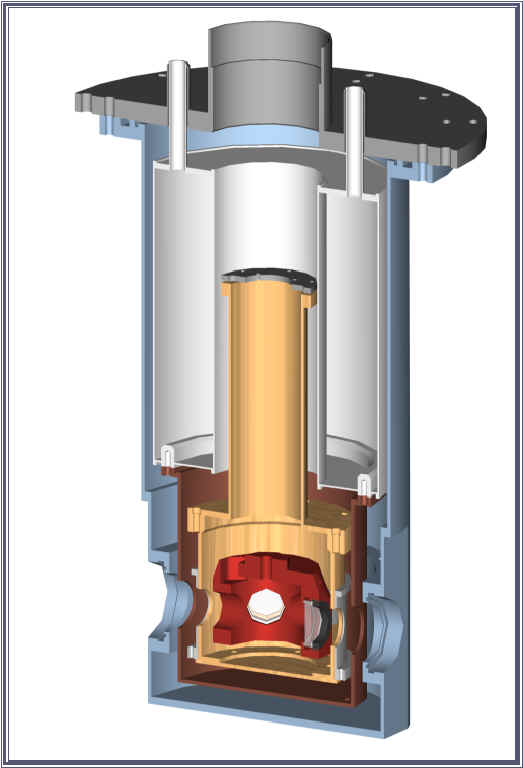
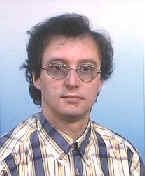

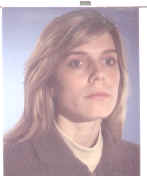 Andrea
Gómez-Zavaglia is a post-doctoral
fellow. He graduated in Biochemistry in 1993
(University of Buenos Aires, Argentina) and
obtained her PhD degree in Biological Sciences
in 2000 (Institute for Low Temperature Food
Preservation) working on preservation of
lactic acid bacteria. Her main interests are
connected with the development of efficient
vitrifying procedures and new cryoprotectants.
To attain this fundamental objective, a
precise physicochemical characterisation of a
series of substances and mixtures of
substances, both at the molecular and
thermodynamic levels, are being undertaken by
complementary use of low temperature
spectroscopic and calorimetric methods,
together with cryobiology methods. Specific
applications to biological material are also
being considered, in particular the study of
the role of cryoprotectants in the dehydration
of biological membranes and their interaction
with potential stress protectants.
Andrea
Gómez-Zavaglia is a post-doctoral
fellow. He graduated in Biochemistry in 1993
(University of Buenos Aires, Argentina) and
obtained her PhD degree in Biological Sciences
in 2000 (Institute for Low Temperature Food
Preservation) working on preservation of
lactic acid bacteria. Her main interests are
connected with the development of efficient
vitrifying procedures and new cryoprotectants.
To attain this fundamental objective, a
precise physicochemical characterisation of a
series of substances and mixtures of
substances, both at the molecular and
thermodynamic levels, are being undertaken by
complementary use of low temperature
spectroscopic and calorimetric methods,
together with cryobiology methods. Specific
applications to biological material are also
being considered, in particular the study of
the role of cryoprotectants in the dehydration
of biological membranes and their interaction
with potential stress protectants.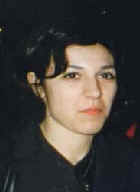 Ermelinda
Maçôas is a Ph.D. Student. Her
interests are connected with the general
problem of vibrational energy
redistribution/relaxation in simple molecules
isolated in matrices at low temperature. Her
studies focus on the processes following
vibrational excitation carried out either in
the mid infrared (fundamental vibrations) or
near infrared (overtones and combination
tones). A systematic procedure of selective
irradiation (in both the mid and near infrared
regions) of a particular molecular species
(conformer) and vibrational mode have been
developed, which is followed by spectroscopic
probing of the intramolecular energy
redistribution/relaxation processes.
Ermelinda
Maçôas is a Ph.D. Student. Her
interests are connected with the general
problem of vibrational energy
redistribution/relaxation in simple molecules
isolated in matrices at low temperature. Her
studies focus on the processes following
vibrational excitation carried out either in
the mid infrared (fundamental vibrations) or
near infrared (overtones and combination
tones). A systematic procedure of selective
irradiation (in both the mid and near infrared
regions) of a particular molecular species
(conformer) and vibrational mode have been
developed, which is followed by spectroscopic
probing of the intramolecular energy
redistribution/relaxation processes. Susana
Jarmelo is a Ph.D. Student. Her
interests are centrered in the study of
intermolecular interactions, in particular
H-bonding, in enzyme-substrate systems. A
novel experimental approach to determine the
strength of H-bonds between serine and H-bond
donors or acceptors are being developed. The
governing premise is that the C-H bond
strength of the alcohol carbon of serine, and
consequently the C-H bond length and
vibrational stretching frequency, are
significantly perturbed by H-bond formation in
a predictable and quantifiable manner. To look
at these effects, extensive isotopical
labelling of the substrates is being used to
create a spectral window where both solvent
and protein contributions are minimal.
Susana
Jarmelo is a Ph.D. Student. Her
interests are centrered in the study of
intermolecular interactions, in particular
H-bonding, in enzyme-substrate systems. A
novel experimental approach to determine the
strength of H-bonds between serine and H-bond
donors or acceptors are being developed. The
governing premise is that the C-H bond
strength of the alcohol carbon of serine, and
consequently the C-H bond length and
vibrational stretching frequency, are
significantly perturbed by H-bond formation in
a predictable and quantifiable manner. To look
at these effects, extensive isotopical
labelling of the substrates is being used to
create a spectral window where both solvent
and protein contributions are minimal. Susana
Breda is a Ph.D. Student. Her main research interests are centrered
in the study of the vibrational spectra and
photochemistry of heterocyclic compounds. A
series of a-pyrones
and analogous compounds have already been
studied in order to analyze the main
photochemical reaction pathways in these
compounds. The preferences for the different
main reaction pathways were found to be
dependent on the substitution at the
heterocyclic ring, thus opening good
perspectives for selective control of the
photochemical processes by chemical
modification of the heterocycles. This control
might have applications in organic synthesis,
as in the Diels Alder reactions.
Susana
Breda is a Ph.D. Student. Her main research interests are centrered
in the study of the vibrational spectra and
photochemistry of heterocyclic compounds. A
series of a-pyrones
and analogous compounds have already been
studied in order to analyze the main
photochemical reaction pathways in these
compounds. The preferences for the different
main reaction pathways were found to be
dependent on the substitution at the
heterocyclic ring, thus opening good
perspectives for selective control of the
photochemical processes by chemical
modification of the heterocycles. This control
might have applications in organic synthesis,
as in the Diels Alder reactions. Susy
Lopes is studying for the Masters
degree. Her research interests are
related with the study of conformationally
flexible molecules. Up to now, she has been
studying dicarboxylic esters and other
dicarbonyl compounds with important
biological and industrial applications. The
more specific problem of the influence of
large amplitude – low frequency vibrations
on molecular properties has been addressed
successfully, both in the cases of single and
double internal rotors.
Susy
Lopes is studying for the Masters
degree. Her research interests are
related with the study of conformationally
flexible molecules. Up to now, she has been
studying dicarboxylic esters and other
dicarbonyl compounds with important
biological and industrial applications. The
more specific problem of the influence of
large amplitude – low frequency vibrations
on molecular properties has been addressed
successfully, both in the cases of single and
double internal rotors.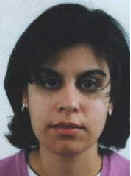 Ana
Borba is
studying for the Masters degree. Her research interests are
the study of intermolecular interactions in
matrix isolated chiral compounds with
biological relevance, and sulphur containing
molecules. The
effects of chirality on the aggregation
processes are particularly relevant in the field
of molecular recognition and enzymatic
catalysis.
Ana
Borba is
studying for the Masters degree. Her research interests are
the study of intermolecular interactions in
matrix isolated chiral compounds with
biological relevance, and sulphur containing
molecules. The
effects of chirality on the aggregation
processes are particularly relevant in the field
of molecular recognition and enzymatic
catalysis.